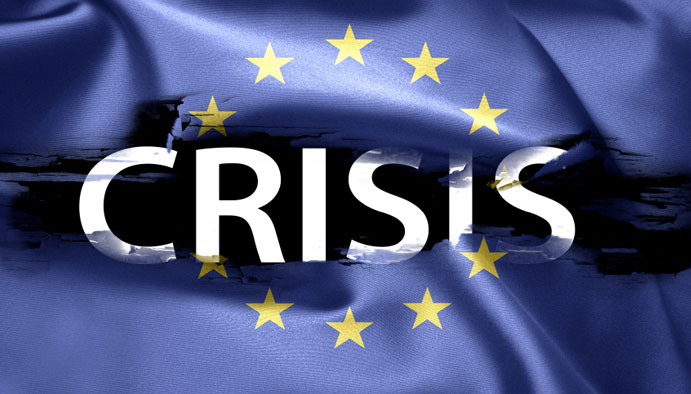It has been not only one, but three. The system borders and European asylum system is about to collapse. Tens of thousands of people are wandering between Greece and the Balkans waiting to find a country that will accept them as refugees. A country like Syria, which was a crucial element in the system of balance of power in the Middle East is slowly disappearing. Therefore Europe is Facing Three Simulatenous Crisis
Europe has historically been built from crisis to crisis, as the orthodox doctrine of Europeanism says. But this doctrine is now subjected to a test of extreme tension, because it is facing not only one crisis but rather three clustered altogether, precisely in a moment in which there are barely left instruments for each Nation State to act independently from the EU umbrella, while there’s neither a glimpse of common instruments to solve these various problems jointly through the EU institutions.
The three crises are chained in time and space like beads on a rosary: Syria first, then the masses of refugees and finally the implosion of the system of European borders. And the three put into question the Europeans and their institutions regarding their responsibilities: the disappearance of a neighboring country, which translates into a devastating geopolitical chaos; at the fate of thousands of refugees, which are being rejected in countries like Hungary and do not get protection in other countries; and the closeness to the collapse of the Schengen system and the return to the system prior to the free movement of persons in the single market of 1993.
The European reaction to the triple crisis is being partial and, definitively insufficient. Although Germany is ready to support up to one million refugees this year, the interior ministers of the EU have not been able to overcome the lower figure of 40,000 initially proposed. The entire roots and infrastructure of the current asylum policy in Europe, which leaves the initiative of decision to each State, no longer serves, and will take a long time to achieve the minimum consensus for its reconstruction. Europe is currently faced with a problem of abundant dialogue on problem-solving, but a lack of actual problem-solving actions. In fact the root problems of the refugees could be solve by creating safe areas in Syria to allow return of refugees, and further putting an end to Assad’s dictatorship and carrying a stabilization-process in the region. All of which require, in the first place, a European foreign and defense common policy. However, such a policy is rather known by its absence and the military means too.







